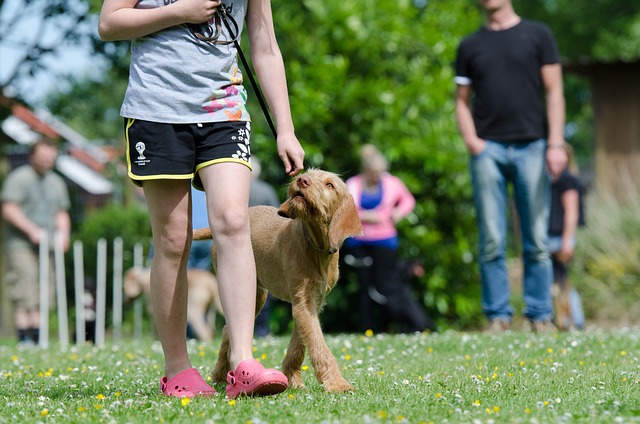As a pet owner, training your dog can be one of the most rewarding experiences you’ll have with your furry friend. Not only does it strengthen the bond between you and your pet, but it also helps establish good behavior and reinforces positive habits. However, with so many different techniques out there, it can be overwhelming to know where to start.
That’s why in this article, we’ll delve into effective dog training techniques that work for a variety of breeds and personalities. From basic obedience commands to more advanced behaviors like agility and tricks, we’ll cover it all. So grab a treat (or two) and get ready to dive into the world of dog training!
Tip #1: Positive Reinforcement Training
Positive reinforcement training is one of the most effective techniques for dog training. It’s based on rewarding desired behaviors with treats, praise, or affection.
The key to positive reinforcement training is to focus on what you want your dog to do instead of what not to do. For example, when teaching a “sit” command, reward your dog the moment their bottom touches the floor. This encourages them to repeat the behavior and builds trust between you and your pet.
Step-by-Step Instructions:
- Choose a quiet area with minimal distractions for training.
- Have treats ready to use as rewards.
- Hold a treat in front of your dog’s nose, about an inch from their face.
- Gently move the treat upwards and backwards, towards your dog’s tail.
- As your dog follows the treat with their head, their bottom will lower into a sitting position.
- Reward your dog with the treat as soon as their butt touches the floor.
Tip #2: Clicker Training
Clicker training is another popular technique that uses a small device to make a distinct sound (usually a “click”) when your dog performs the desired behavior.
The clicker helps your dog associate the sound with the action, allowing them to quickly learn new commands and behaviors. To get started with clicker training, choose a quiet area and have some treats ready.
Step-by-Step Instructions:
- Introduce the clicker by clicking it without any reward, just for fun!
- Choose a desired behavior (e.g., “shake” or “roll over”) and hold the treat near your dog’s nose.
- Click the device the moment your dog performs the desired behavior.
- Reward your dog with the treat immediately after clicking.
Tip #3: Redirection Training
Redirection training is a technique that involves redirecting unwanted behaviors to more desirable ones. For example, if your dog is barking excessively at strangers, you can redirect them to focus on a “quiet” command instead.
This technique requires patience and consistency but can be highly effective in managing problem behaviors. Here’s how to get started:
Step-by-Step Instructions:
- Identify the unwanted behavior (in this case, excessive barking at strangers).
- Choose a desired alternative behavior (e.g., “quiet” command).
- Have some treats ready to use as rewards.
- When your dog starts barking, say “quiet” firmly but calmly and hold up a treat.
- As soon as your dog stops barking, reward them with the treat and praise.
Tip #4: Socialization Training
Socialization training is critical for any dog, especially puppies. It helps your dog become confident and calm in the presence of new people, animals, and environments.
To socialize your dog effectively, start early (around 8-10 weeks old) and expose them to various experiences gradually. Here are some tips:
Step-by-Step Instructions:
- Enroll in puppy socialization classes or group training sessions.
- Arrange playdates with friendly dogs of similar size and breed.
- Exposure to new environments, such as parks, pet stores, and dog-friendly cafes.
Tip #5: Consistency is Key
Consistency is crucial for any successful training program. Ensure everyone involved (including family members and visitors) follows the same commands and rewards to avoid confusing your dog.
Here are some tips for maintaining consistency:
Step-by-Step Instructions:
- Establish a routine for training sessions, rewarding good behavior, and correcting bad behavior.
- Set clear boundaries and rules with family members and visitors.
- Use positive reinforcement techniques to encourage desired behaviors.
Conclusion
Dog training is a journey that requires patience, consistency, and positive reinforcement. By following these effective dog training techniques, you can strengthen the bond with your furry friend, establish good behavior, and enjoy a happier, healthier relationship.
Remember to always reward desired behaviors with treats, praise, and affection, rather than punishing undesired ones. With time and practice, your dog will become a well-behaved companion that brings joy to your life.

